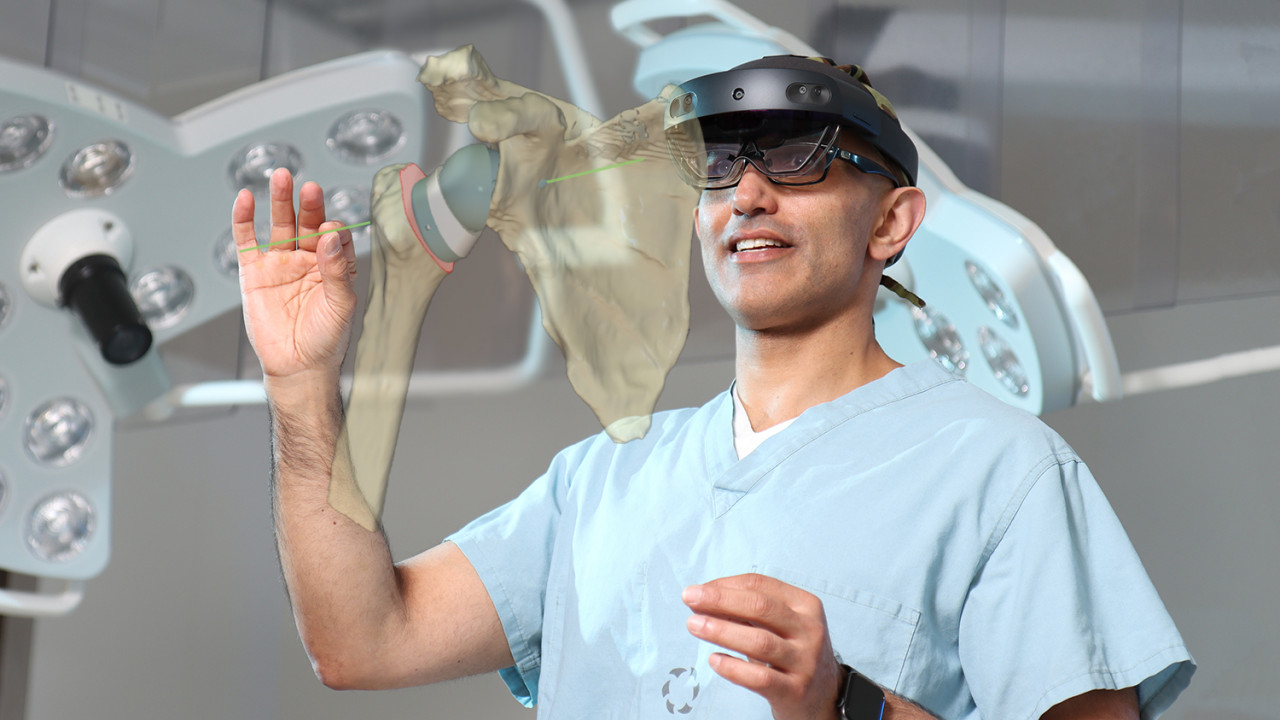MEDIA RELEASE: 3D holograms a very real, new operating room tool at St. Joseph’s

London Ontario – At the Roth | McFarlane Hand and Upper Limb Centre at St. Joseph’s Hospital, Dr. George Athwal has become a Canadian pioneer in the development and use of digital 3D holograms to enhance surgical precision for shoulder replacement patients, which is expected to reduce complications and improve outcomes.
Digital holograms are a revolution in the field of interactive ‘mixed reality’ technology, which is emerging as an exciting new tool in operating rooms. Part of a team who developed the technology for shoulder replacement surgery, Dr. Athwal was the first surgeon in Canada to perform a mixed reality shoulder replacement, and the second in the world.
Mixed reality is the “mix” of immersive computer-generated environments and the “real” physical environment. Wearing a specially-designed headset, Dr. Athwal uses verbal commands and hand movements to manipulate a digital 3D hologram of the patient’s anatomy and the metallic implant, which is based on a CT scan of the patient’s bones. The technology is used for preoperative planning and in the operating room during the actual surgery. Dr. Athwal has the hologram hovering within reach for reference as he operates.
“It is a groundbreaking tool that allows me to replicate the surgical plan very precisely,” says Dr. Athwal. “I am able to see issues with impingement of the joint replacement and ensure the best fit for the implant, which will hopefully provide the best outcome for the patient.”
Dr. Athwal worked with Stryker, a manufacturer of shoulder implants, and Microsoft Corporation, manufacturer of the HoloLens 2 – a holographic headset – to develop the mixed reality shoulder replacement technique. There are now surgeons in multiple countries using this tool, says Dr. Athwal, who has since performed several surgeries using the technology and is in demand to provide demonstrations world-wide.
Interest in mixed reality technology to enhance surgery is starting to take flight, adds Dr. Athwal. “It’s really helping physicians do a precise and fine-tuned shoulder replacement, which will hopefully result in a lower complication rate and therefore an anticipated higher success rate and longevity of the newly replaced joint.”
At the Roth | McFarlane Hand and Upper Limb Centre, a world-renowned centre of excellence in education, research, diagnosis and treatment of complex conditions of the hand, wrist, elbow and shoulder, the technology is only available for patients needing shoulder replacements (arthroplasty), such as total shoulder arthroplasty or reverse shoulder arthroplasty.
Dr. Athwal is available for interviews from 1 to 3 pm, Mar. 25. To arrange, contact:
Dahlia Reich, Communication Consultant
St. Joseph’s Health Care London
519 646-6100 ext. 65294, Cell: 519 619-0971, pager 10117
@email